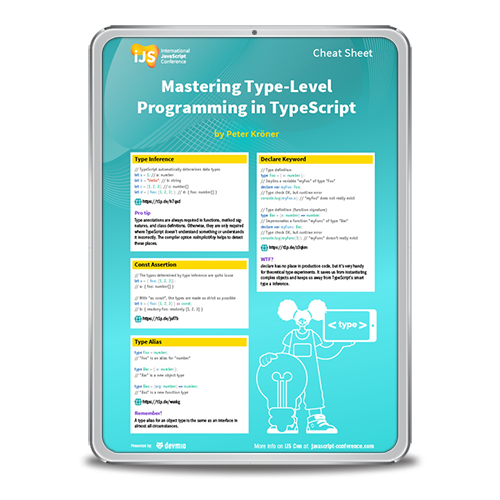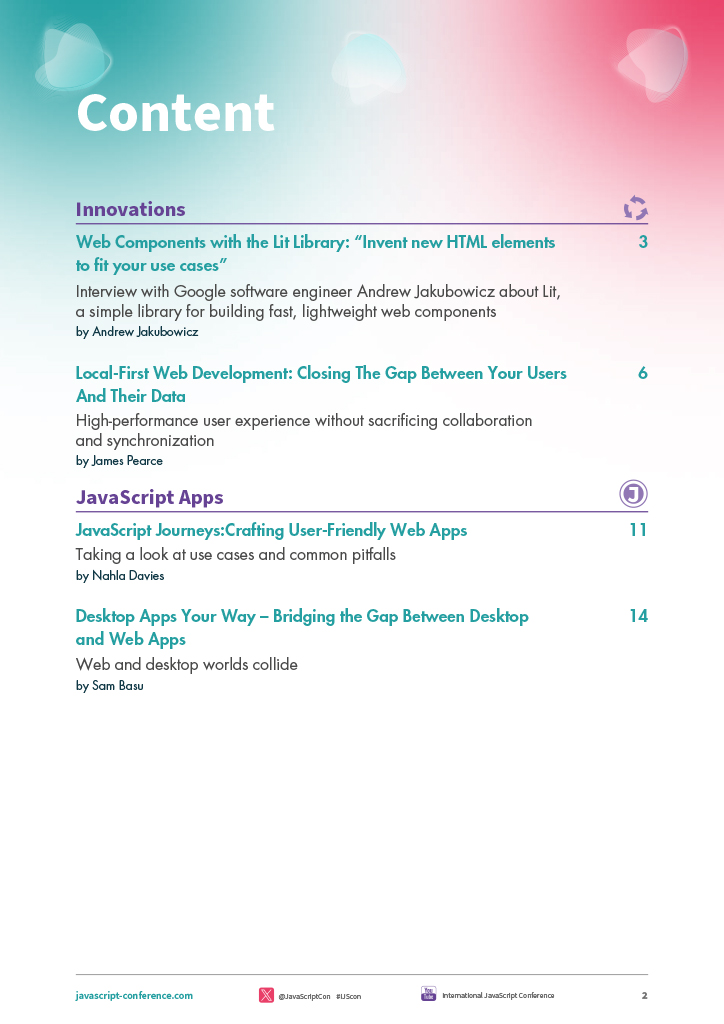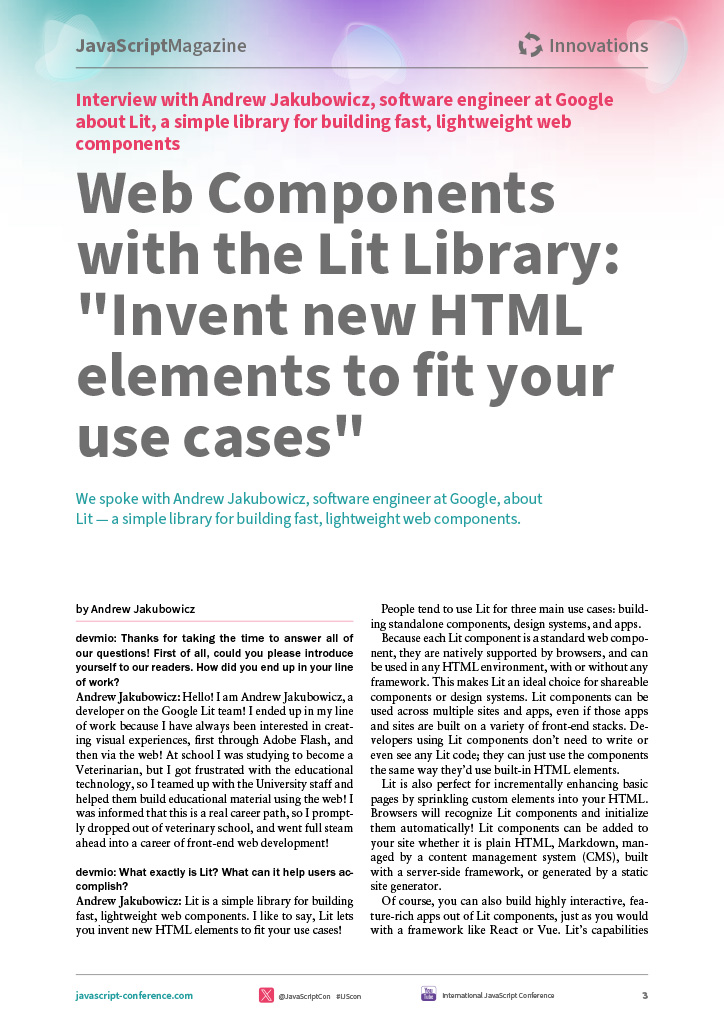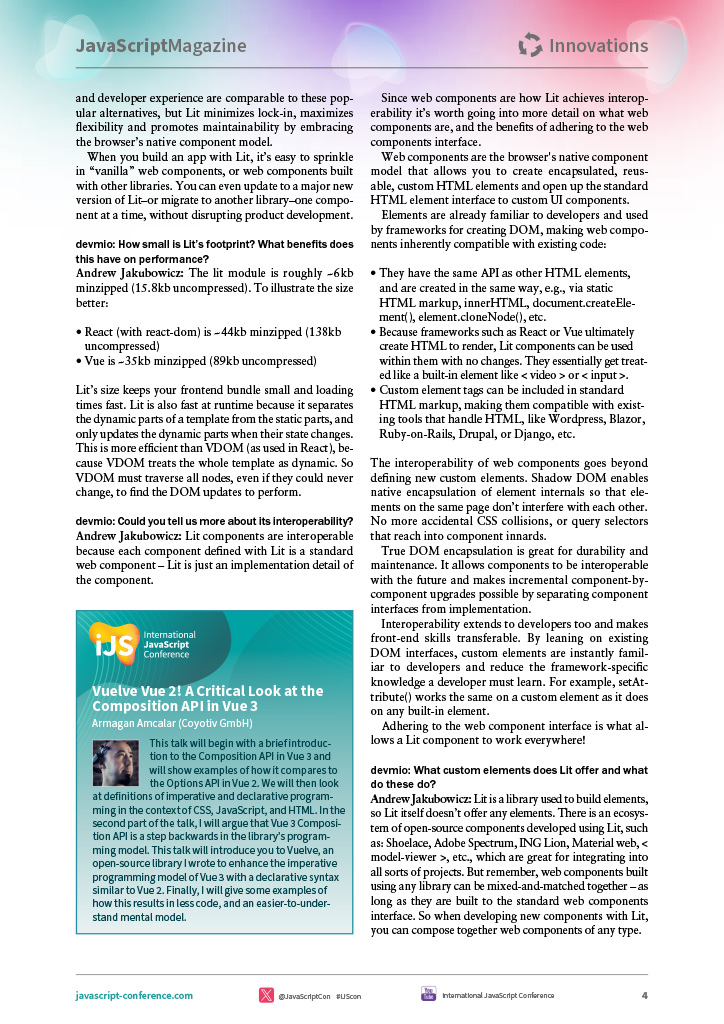- Conferences
- Program
- Program
- Program
- Program
- Program
- Tickets
- Tickets
- Tickets
- Tickets
- Tickets
- Blog
- Downloads
- Sponsors & Expo
- Info
- Editions
- Register now
- Register now
- Register now
- Register now
- Register Now
Innovations in JavaScript Development
Fashion dictates that apps should be mere thin clients, displaying data that’s stored somewhere in the cloud. But there is another way! There’s a movement growing around an alternative architecture – “local-first” apps – designed instead with data primarily stored on the device, and facilitating high performance user-experiences without sacrificing collaboration and synchronization. In this magazine, we’ll discuss some of the pros and cons of cloud-first vs local-first apps, and take a look at a JavaScript state management library called TinyBase that’s built with these principles in mind.

Table of Contents
- Web Components with the Lit Library: “Invent new HTML elements to fit your use cases”
By Andrew Jakubowicz - Local-first Web Development: Closing the Gap between your Users and their Data
By James Pearce - JavaScript Journeys: Crafting User-Friendly Web Apps
By Nahla Davies - Desktop Apps your Way – Bridging the Gap between Desktop and Web Apps
By Sam Basu










DON'T MISS ANY NEWS
DON'T MISS ANY NEWS
Unlock Exclusive Discounts & Free Recordings Today

Register for a free devmio Fullstack membership to secure:
 6 months access to session recordings.
6 months access to session recordings.
 $100 discounts on iJS New York tickets.
$100 discounts on iJS New York tickets.
 1 year unlimited access to devmio - the conference platform.
1 year unlimited access to devmio - the conference platform.
Sign Up today and get a taste of iJS New York! Free for a limited time.